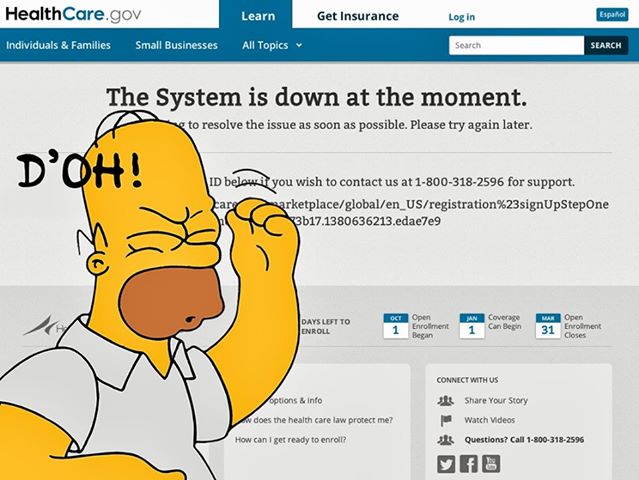Healthcare.gov – No Good Excuses Exist for the Failure of Obamacare’s Expensive Website.
Test.
Test.
Test.
Of course, programmers are responsible for testing their own code as far as possible. But programmers are usually the worst people to test their own code. They know where all the bodies are buried, and only the most disciplined are likely to test things they know are likely to break. After all, they’ve fixed it before, and are heartily sick of making sure that the date field doesn’t bomb when someone enters 11//1994, instead of 1/1/1994.
There are QA testers, who make sure that things work as advertised. They’re given a list of expected behaviors, and run through the site, making sure that the it does the things the programmers say it will do. More importantly, they run through the site, deliberately making mistakes, to be sure that the site doesn’t break.
There’s beta testing, which basically is a larger group of people who aren’t given any specific instruction. They’re the ones most likely to imitate actual users, since ideally, they have no preconceptions of how the site is supposed to behave, and where it might break.
There’s load testing, which simulates a huge number of hits, all at once, to make sure that the servers don’t buckle and fold like a cheap suit when everyone tries to buy that cool toy all at the same time.
What could have been done? It’s sort of obvious…
Test. Test. Test.
If you’re going to have a big, splashy rollout of a controversial government service that half the country is rooting against anyway, you need to test it until it’s bulletproof.
Author Joshua Sharpe goes on to mention using a smaller rollout model where the public could have been used essentially as beta testers.
All of the code would still have needed merciless QA testing and beta testing, but each section would have been solid before the next one was rolled out, and where that wasn’t possible, the potential weaknesses would have been known beforehand, making it easier to locate the launch-day failures that remained.
From what I’ve heard, you can’t even access plan pricing until the end of the process. Since that is the information that people are seeking, the design and process would have to be changed to implement the rollout model.
There is no other way to describe the launch of healthcare.gov but as an amateur hour failure.










